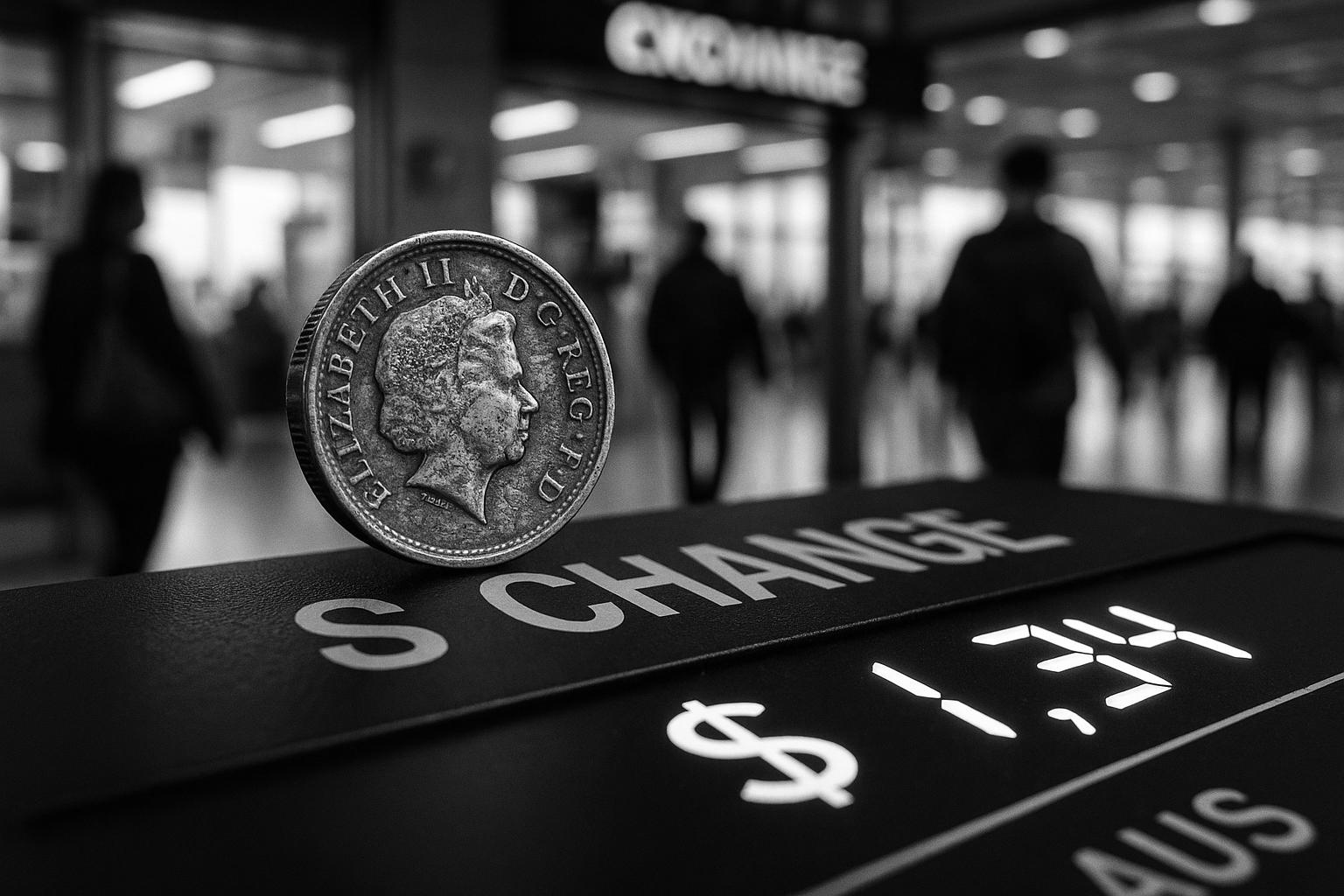Anyone heading to the United States this August may discover that one of the small comforts of travel — a favourable exchange rate — has quietly returned. After a prolonged period of weakness, sterling has firmed, trading around $1.34 in recent sessions and recovering ground against the euro, a shift that has made cash in British pockets stretch further than it did at the depths of the post‑mini‑Budget slump. Market commentaries and intraday FX desks picked up the move as investors rotated back into a wider set of developed‑market currencies.
The strength looks counter‑intuitive given the domestic backdrop. Pundits and policymakers alike have highlighted Britain’s recent fiscal strains and the prospect of fresh tax measures after last year’s large fiscal shock. At the same time, the Bank of England last week cut its Bank Rate to 4.00 per cent in a narrow 5–4 vote, a move that the MPC said was designed to balance persistent domestic inflationary pressures with the fragile outlook for growth. The Bank’s August Monetary Policy Report sets out the Committee’s view that inflation remains elevated — and that the path for policy will be conditioned by how import prices, energy costs and services inflation evolve.
International factors, however, have been the principal force behind sterling’s rally. Dollar weakness through the spring — amplified by tariff shocks and concerns about the direction of US fiscal policy — pushed investors into a range of alternatives, including the euro, the Swiss franc and, increasingly, sterling. Safe‑haven flows also lit up gold and other stores of value: bullion surged to record levels in April as traders sought protection from trade tensions and a softer dollar, while some investors shifted into cryptocurrencies and other non‑dollar assets. At the same time, official scores and independent budget assessments have amplified market unease about the US fiscal trajectory, with analyses pointing to very large additions to the federal deficit from recent tax and spending packages.
That global context helps explain why, despite a lower Bank Rate, sterling is holding up: interest‑rate differentials and expectations about future central‑bank moves remain crucial. Markets are pricing a slower pace of further cuts from the Bank of England than previously expected, while the ECB’s deposit rate sits materially lower and US yields have softened amid the twin forces of weaker growth signals and investor reassessment of fiscal risks. Analysts noted that this constellation of factors — currency moves, central‑bank differentials and shifting safe‑haven demand — underpinned the intraday FX behaviour that traders observed when the BoE announced its decision.
A firmer pound has a direct economic payoff: it reduces the price of imports and acts as a brake on inflation coming through from overseas. The Bank’s latest modelling suggests import prices could fall this year, easing some of the upward pressure on consumer prices and limiting the pass‑through from dollar‑priced energy into household bills. That effect is part of the Bank’s calculation in judging how quickly domestic policy can be eased without risking a re‑acceleration of inflation.
But the gain for consumers carries an offset for exporters and the wider tradeable sector. A stronger currency makes UK goods and services more expensive for overseas buyers at a time when global trade is fragmenting and barriers are rising. That loss of competitiveness matters for a country that has often relied on external demand to sustain growth: when sterling was weak in past episodes, exporters typically benefitted; the current strengthening runs that script in reverse.
The resilience of the pound has also rekindled familiar political and commercial debates. Retailers and tourism‑sector voices, picked up in commentary, argue that a higher exchange rate compounds the squeeze on inward spending and encourages wealthy shoppers to spend abroad; some columnists have seized on the point to call for policy changes such as VAT refunds for tourists, arguing the measures would help keep premium spending in London. Those suggestions, coming from journalistic and industry commentary, frame the domestic distributional choices that accompany any pronounced currency move.
Looking back, commentators point to precedent: past crises forced Britain to confront currency weakness — from the IMF rescue of the mid‑1970s to the stronger export performance after the pound left the exchange rate mechanism in 1992. Those episodes underscore the dilemmas for policymakers today. On one hand, a stronger pound is a useful shock absorber for import‑driven inflation; on the other, it complicates the task of rebalancing growth and supporting tradeable sectors in a more protectionist global environment.
The arithmetic is simple but politically thorny. A firmer sterling eases some inflationary pressures and buys breathing space for the Bank of England; it does not, however, eliminate the underlying fiscal and structural questions that markets are signalling. The near‑term picture will be shaped by developments in global risk sentiment, the trajectory of US fiscal and trade policy, and how quickly domestic wage and services inflation respond. Policymakers face a choice between leaning into exchange‑rate relief for households and addressing competitiveness and fiscal sustainability in a more constrained international landscape.
📌 Reference Map:
##Reference Map:
- Paragraph 1 – [1], [4]
- Paragraph 2 – [1], [3], [2]
- Paragraph 3 – [1], [7], [6], [5]
- Paragraph 4 – [3], [4], [2]
- Paragraph 5 – [2], [1]
- Paragraph 6 – [1], [2]
- Paragraph 7 – [1]
- Paragraph 8 – [1]
- Paragraph 9 – [2], [3], [5]
Source: Noah Wire Services
